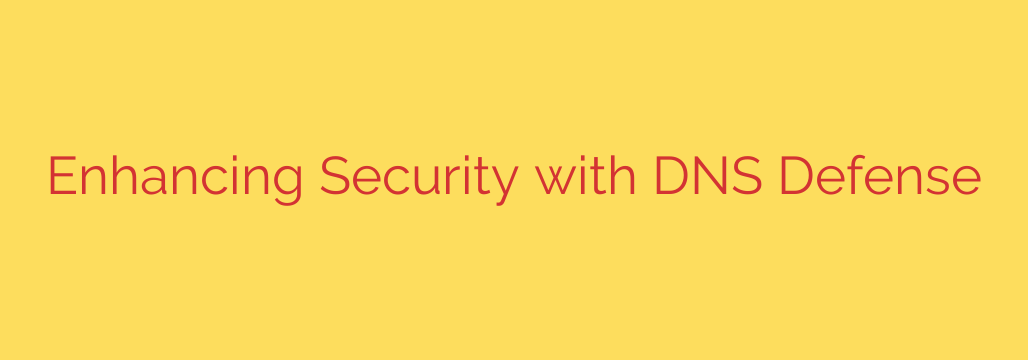
The Domain Name System, or DNS, is a fundamental technology that powers the internet. It acts like a phonebook, translating human-readable website names (like example.com) into machine-readable IP addresses. Despite its critical role, DNS is often an overlooked layer in many organizations’ security strategies, making it a prime target for cybercriminals.
Understanding DNS vulnerabilities is the first step towards robust protection. Attackers exploit DNS for various malicious activities, including:
- DDoS attacks: Overwhelming DNS servers to disrupt access to websites or services.
- Cache poisoning (DNS spoofing): Injecting false information into DNS caches, redirecting users to fraudulent websites instead of legitimate ones.
- DNS tunneling: Exfiltrating data or establishing command-and-control channels hidden within legitimate DNS queries.
- Domain hijacking: Gaining unauthorized control over a domain’s DNS records, allowing attackers to redirect traffic or impersonate the domain.
- Phishing and Malware Distribution: Using newly registered or compromised domains with rapidly changing IP addresses (Fast Flux DNS) to host malicious content or launch phishing campaigns, making them hard to block.
Given these threats, effective DNS defense is no longer optional; it’s a security imperative. Implementing a dedicated DNS security solution provides critical layers of protection that traditional firewalls and endpoint security may miss.
Key elements of a strong DNS defense include:
- Threat Intelligence Filtering: Blocking access to malicious domains known for hosting malware, phishing sites, or command-and-control servers based on continuously updated threat feeds.
- Behavioral Analytics: Monitoring DNS traffic patterns for anomalies that might indicate tunneling, data exfiltration, or communication with botnet infrastructure.
- Enforcing Policies: Applying granular policies to control which types of sites users can access, enhancing compliance and reducing exposure to risky content.
- Visibility and Monitoring: Providing detailed logs and real-time insights into DNS queries, allowing security teams to detect and investigate suspicious activity quickly.
- DNSSEC Implementation: Using DNS Security Extensions to cryptographically sign DNS records, preventing cache poisoning and ensuring the authenticity of DNS data. While not a complete solution on its own, it’s a foundational element.
- Response Capabilities: Automating or streamlining the response to detected threats, such as blocking suspicious queries or alerting security personnel.
By enhancing security at the DNS layer, organizations can prevent a significant percentage of cyber attacks from reaching their targets or spreading laterally within the network. It provides a proactive defense against threats that rely on DNS resolution to communicate or deliver payloads.
Investing in advanced DNS defense capabilities not only protects against known threats but also provides resilience against emerging attack vectors. It’s a critical component of a comprehensive cybersecurity posture, safeguarding users, data, and network integrity against the ever-evolving landscape of online attacks. Prioritizing DNS security is essential for any organization serious about protecting its digital assets.
Source: https://feedpress.me/link/23532/17040655/introducing-secure-access-dns-defense








